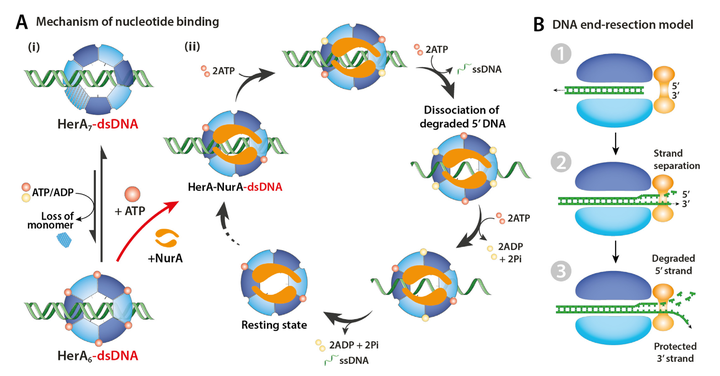Mechanistic Insight into the Assembly of the HerA-NurA Helicase-Nuclease DNA End Resection Complex using Native Mass Spectrometry

Abstract
[Nucleic Acids Research] The HerA–NurA helicase–nuclease complex cooperates with Mre11 and Rad50 to coordinate the repair of double-stranded DNA breaks. Little is known, however, about the assembly mechanism and activation of the HerA–NurA. By combining hybrid mass spectrometry with cryo-EM, computational and biochemical data, we investigate the oligomeric formation of HerA and detail the mechanism of nucleotide binding to the HerA–NurA complex from thermophilic archaea. We reveal that ATP-free HerA and HerA-DNA complexes predominantly exist in solution as a heptamer and act as a DNA loading intermediate. The binding of either NurA or ATP stabilizes the hexameric HerA, indicating that HerA–NurA is activated by substrates and complex assembly. To examine the role of ATP in DNA translocation and processing, we investigated how nucleotides interact with the HerA–NurA. We show that while the hexameric HerA binds six nucleotides in an ‘all-or-none’ fashion, HerA–NurA harbors a highly coordinated pairwise binding mechanism and enables the translocation and processing of double-stranded DNA. Using molecular dynamics simulations, we reveal novel inter-residue interactions between the external ATP and the internal DNA binding sites. Overall, here we propose a stepwise assembly mechanism detailing the synergistic activation of HerA–NurA by ATP, which allows efficient processing of double-stranded DNA.